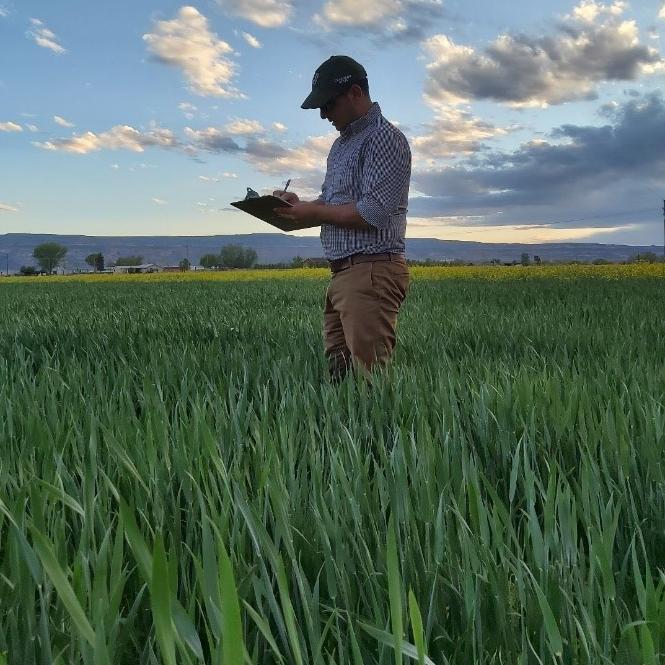
Credit: Photo courtesy of Reza Keshavarz
An estimated 17.3% of people worldwide are at risk of inadequate zinc intake; zinc deficiency is a major human health concern. Increasing Zn concentration in wheat grains is highly important, and management strategies to enhance grain Zn concentration can play an important role in fighting nutrient deficiency.
In a practice known as biofortification, researchers use agronomic practices, plant breeding or biotechnology to increase the macronutrient content of food crops. It is as an effective strategy to increase Zn concentration in wheat grain.
In a recently published Agronomy Journal article, researchers reported the effect of zinc foliar application on yield, protein, and grain zinc concentration of hard red spring wheat cultivars in a dryland system in Montana. Zinc sulfate was sprayed on plant canopy at a rate of 1.12 kg Zn ha-1 once (at heading) or twice (at heading and flowering).
Their results showed that the second application of Zn at flowering was necessary to produce grains with Zn concentration above the target level of 40 mg kg-1 as suggested by nutritionists. Zinc application also marginally increased grain yield; however, yield increment did not offset costs associated with Zn fertilization.
Given the need for producing grain with greater Zn concentration, price incentives or government payments are necessary to motivate farmers to adopt biofortification.
###
Media Contact
Rachel Schutte
[email protected]
Related Journal Article
http://dx.




